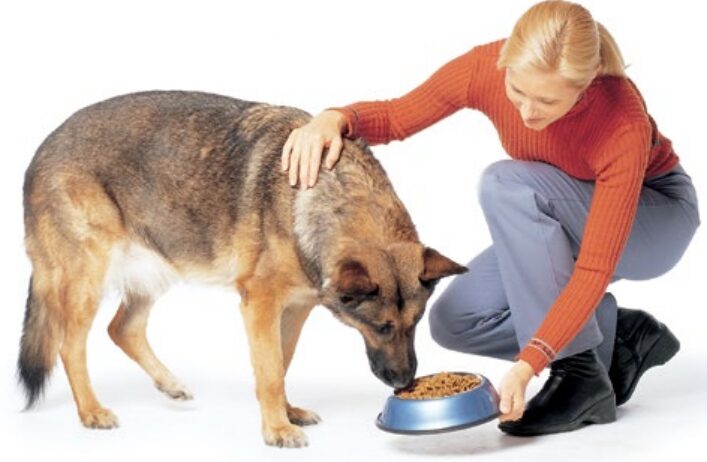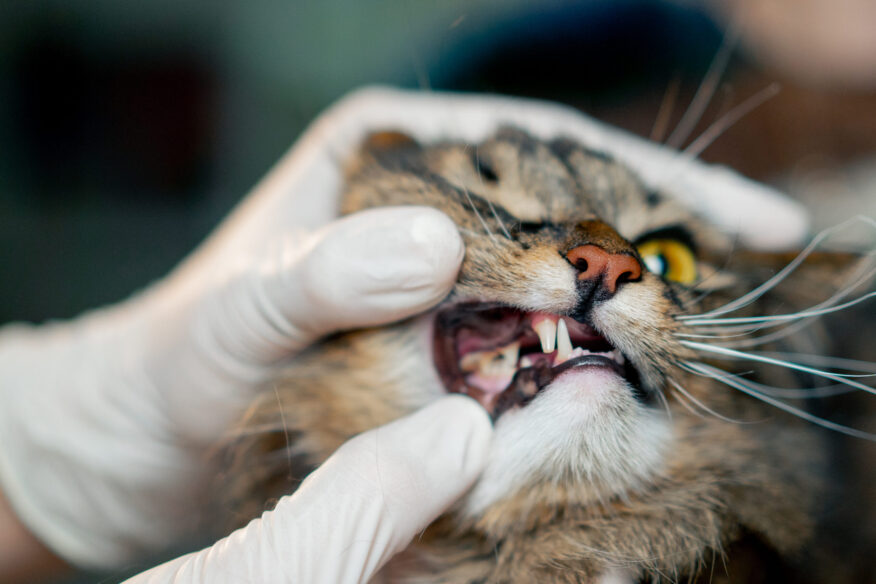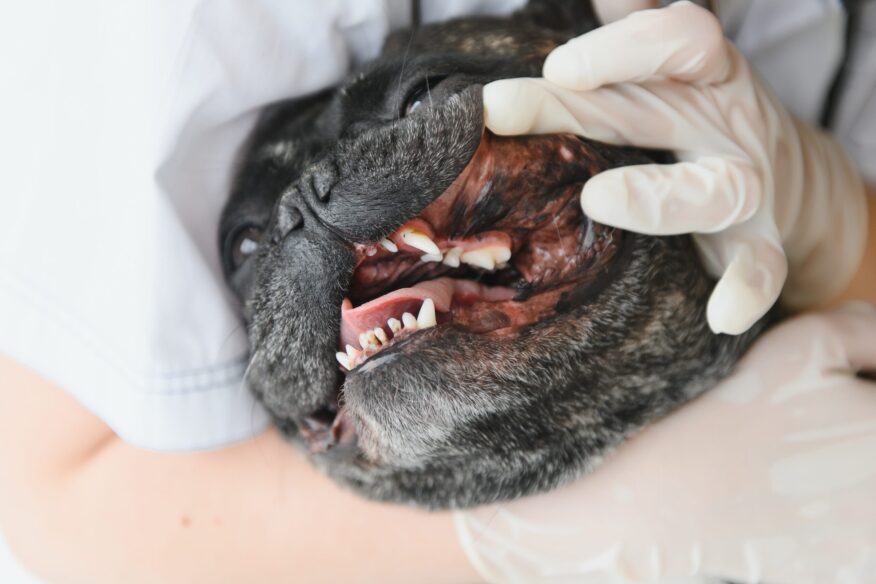Your pet counts on you for
protection
With major advances in treating serious infectious and other pet diseases, oral disease – most importantly periodontal or gum disease caused by the buildup of plaque and tartar – has become a major health problem for both dogs and cats. Without proper dental care, a significant number of dogs and cats may show signs of oral disease by age three. With your help, your pets can have healthy teeth and gums throughout their lives.
You simply need to provide them with a few things:
A diet designed for optimal dental
health, as recommended by your
veterinarian.
Good quality dental chews as treats.
Regular brushing at home – your
veterinarian can demonstrate this.
Yearly dental check-ups by your
veterinarian.
Brushing your pet’s teeth
Dogs and cats can have their teeth brushed in order to eliminate the dental plaque that can cause tooth decay and the formation of tartar, which can lead to gum disease. You should begin a regular, daily brushing routine as soon as you bring your new kitten home or, in the case of puppies, at six to eight weeks of age. Even older dogs or cats can be trained to accept having their teeth brushed. You simply need to introduce the activity gradually and make the experience a positive one for your pet, using the technique your veterinary professional has taught you. Reassure and praise them profusely throughout the process, and reward them with a very special treat when it’s finished. Here’s how it can be done:
| Phase 1 | Start by dipping a finger in beef stock for dogs, and tuna water or warm water for cats. Rub this finger gently over your pet’s gums and one or two teeth. Repeat until your pet seems fairly comfortable with this activity. |
| Phase 2 | Gradually, introduce a gauze-covered finger and gently scrub the teeth with a circular motion. |
| Phase 3 | Then, you can begin to use a toothbrush, either an ultra-soft model designed for people (baby tooth-brushes work well for cats) or a special pet toothbrush or finger brush, which is a rubber finger covering with a small brush built-in at its tip. Always consult your veterinary professional about the most appropriate products and techniques for your pet. |
| Phase 4 | Finally, once your pet is used to brushing, introduce the use of pet toothpaste in liquid or paste form. Most of these contain chlorhexidine or stannous fluoride – ask your veterinarian for their recommendations. Don’t use human toothpaste, as it can upset your pet’s stomach. If using a finger brush, transition to a soft pet or baby’s toothbrush. Focus on the outside surfaces of the teeth and avoid placing your fingers between the upper and lower teeth. Your vet may also advise the use of an antiseptic spray or rinse after brushing. |
Brushing your dog’s teeth

Brushing your cat’s teeth

Good dental health begins with a proper diet
The wrong kinds of food can cause dental health problems in pets. Feeding your cat or dog a dry food, rather than a moist canned one, will through its mild abrasive action on the teeth, help remove the bacterial plaque that can harden as tartar. Dry food also provides adequate chewing exercise and gum stimulation. Avoid giving your pet sweets and table scraps as they may also increase plaque and tartar formation. Your veterinarian may recommend the use of special dry foods designed to reduce plaque and tartar buildup, especially if your pet is prone to dental problems due to their breed or individual genetic history.

A few tips:
- Chew treats, including hard meatprotein biscuits and rawhide chews for dogs, can help remove plaque, and provide stimulation for the gums.
- Watch out for wood – throwing sticks to dogs or letting your cat pick up a piece of wood with their mouth can result in splinters and gum damage.
- Don’t let your pet chew on hard materials like stones. They can wear down, even break teeth, damage gums and lead to infection.
A few statistics:
- Kittens have their first 26 ‘milk’ or deciduous teeth at 2 to 3 weeks of age. Their 30 permanent teeth begin erupting around 3 months.
- Cats have the fewest teeth of any common domestic mammal.
- Puppies develop their deciduous
teeth at 2 weeks of age, with their 42 permanent teeth starting to appear at 3 months.
Don’t forget a yearly dental check-up
Doing your best to ensure that your dog or cat receives the proper diet and regular brushing at home will help maintain his or her teeth and gums in top condition. To provide optimum dental care at home, you need to start with a clean bill of dental health. That’s where your pet’s veterinarian comes in. He or she will give your pet a thorough examination of the entire oral cavity to determine whether there are any underlying problems and importantly, tartar build-up. Brushing removes plaque but not tartar, so if your pet’s teeth do have tartar, your veterinarian will have to remove it with a professional cleaning and polishing, usually accomplished under general anaesthesia. After removing the tartar above and below the gum line, your veterinarian may treat your pet’s teeth with fluoride and will provide you with instructions for home care and follow-up.




